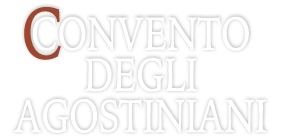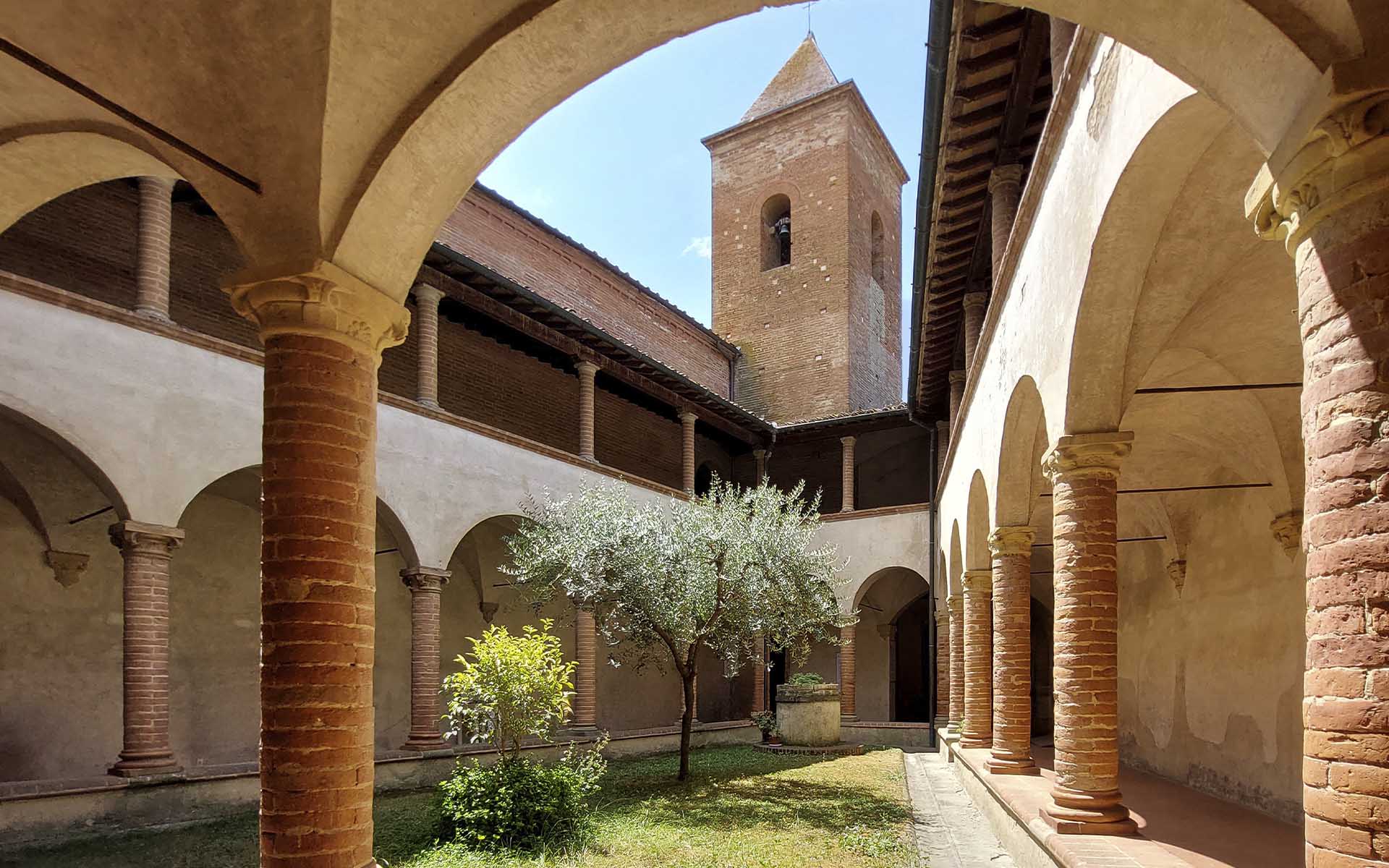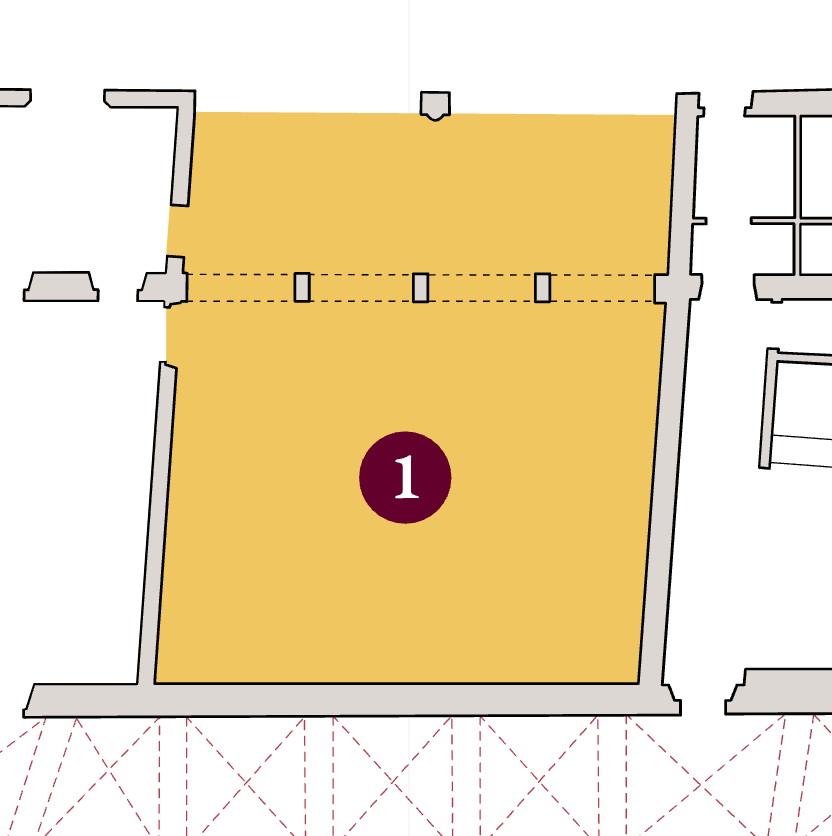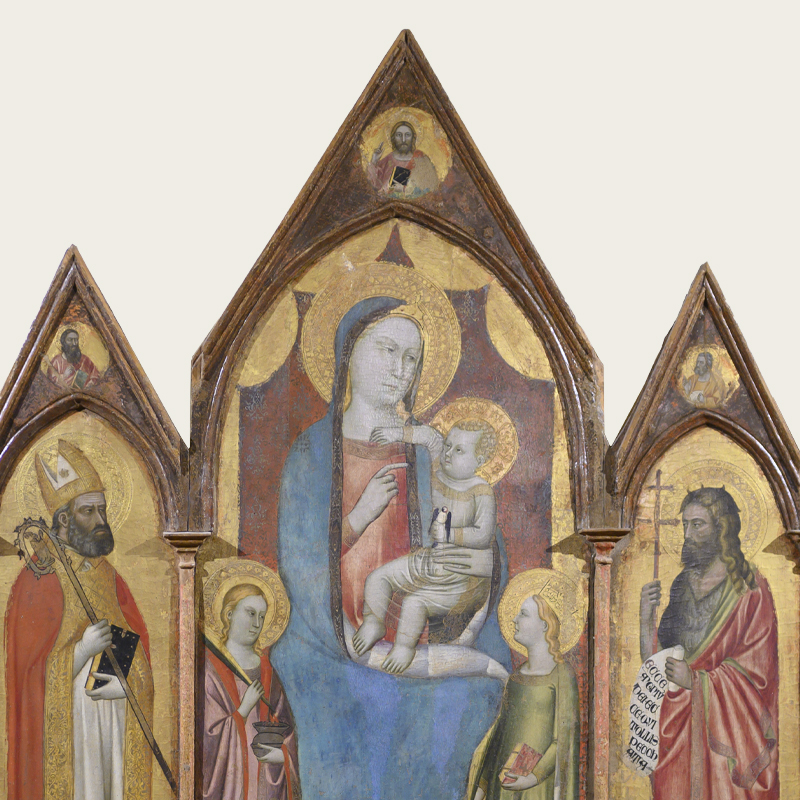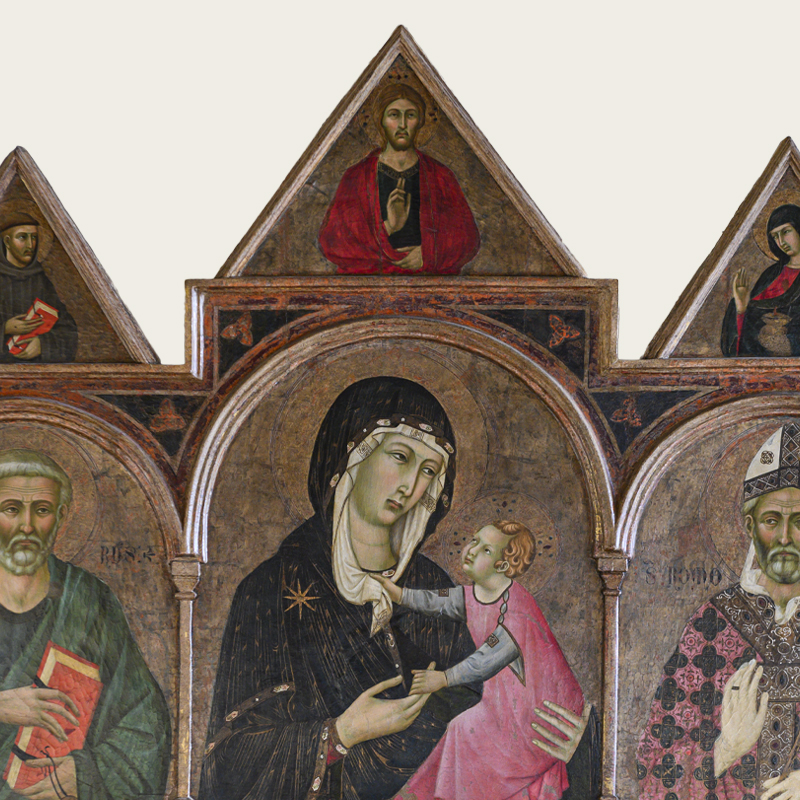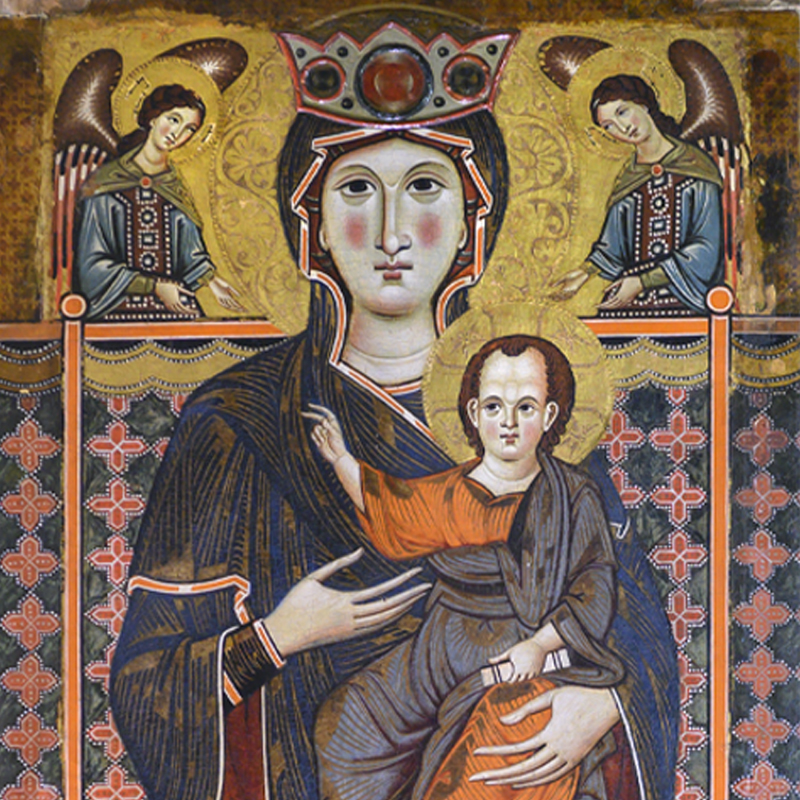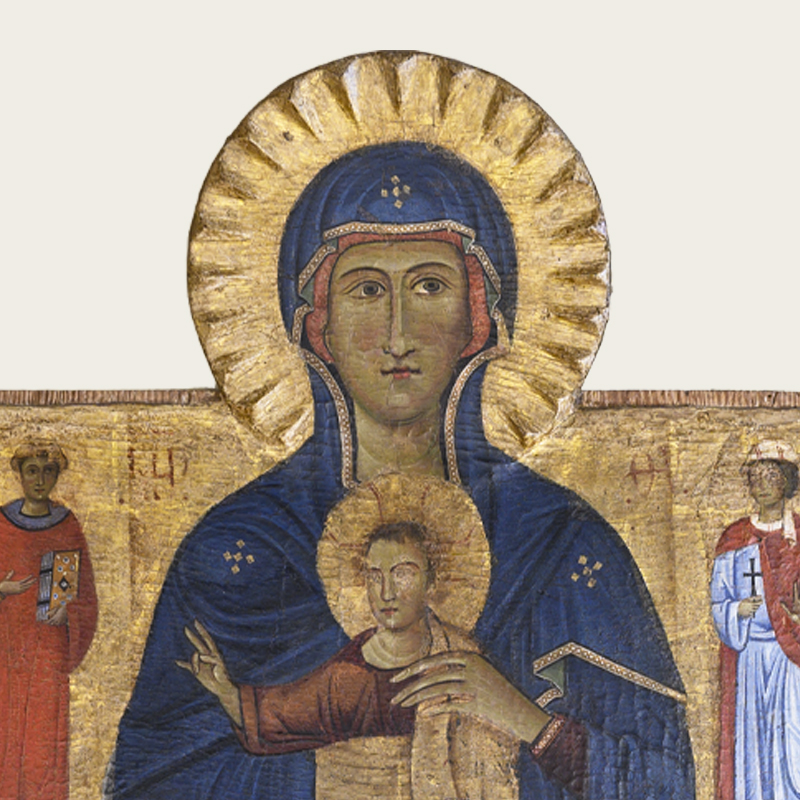In the large hall, which is open toward the city walls, are exhibited in chronological order the panels that arrived from the churches in the ecclesiastical vicariate of Certaldo, in particular from santa Maria a Bagnano (a hamlet near the castle of Semifonte), where the oldest gold backgrounds were located originally. These panels express how that territory was a crossroads of patron taste, sometimes oriented toward the narrative language of Florentine paintings, sometimes toward the warm and deep chromaticism of the culture of Lucca and Pisa, which is evident in the two precious thirteenth-century Madonnas, one by the the Master of Bigallo and the other by Meliore di Jacopo. Also valuable are the 14th-century polyptychs one attributed to Ugolino di Nerio and the other to the Giottesque Puccio di Simone, the latter datable to around 1357, the date of the artist’s return to Florence from a brief and fruitful stay in Fabriano. Finally, of relevant importance are the two frescoes detached in 1963 from the church of San Martino a Maiano, painted around 1405-1410 by the loquacious populariser Cenni di Francesco commissioned by Benedetto di Baldo “for the remedy of his soul,” as the inscription (surely reworked) on the panel depicting Saints Martin of Tours and Catherine of Alexandria states. In the other panel, however, we find the Madonna with Child within a niche spatially defined by the slender twisted columns in the foreground.
Two paintings from the later period complement the collection of early panels. The Madonna with Child and Saints with the client Bartolomeo Dainelli, dated 1525, once attributed to the Brescian Raffaello Piccinelli (who settled in Siena), now connected to Ridolfo del Ghirlandaio for style, construction of the composition e for details similar to other panels painted by the same artist. More interesting is the Circumcision, with its obvious Nordic references in the figures of the Madonna and St. Joseph and the bright colouring of the robes, probably by the hand of a collaborator of Bernardino Poccetti, an artist well known in the Certaldo area because of his presence in the Company of the Annunciation in the church of Santa Maria in Marcialla of the canvas depicting the SS. Conception with St. Lucy and four other saints, and for his Apparition of St. Michael to the Bishop of Siponto in the small chapel dedicated to St. Michael the Archangel in Semifonte, built by Neri Capponi between 1594 and 1597 by testamentary will of his uncle Giovanni Battista, owner of Villa di Petrognano and canon of the Cathedral of Santa Maria del Fiore. The chapel was built to a design by Santi di Tito. It is quite possible that the Ciricumcision’s commission, dated back to 1590’s, is attributable to Neri.
